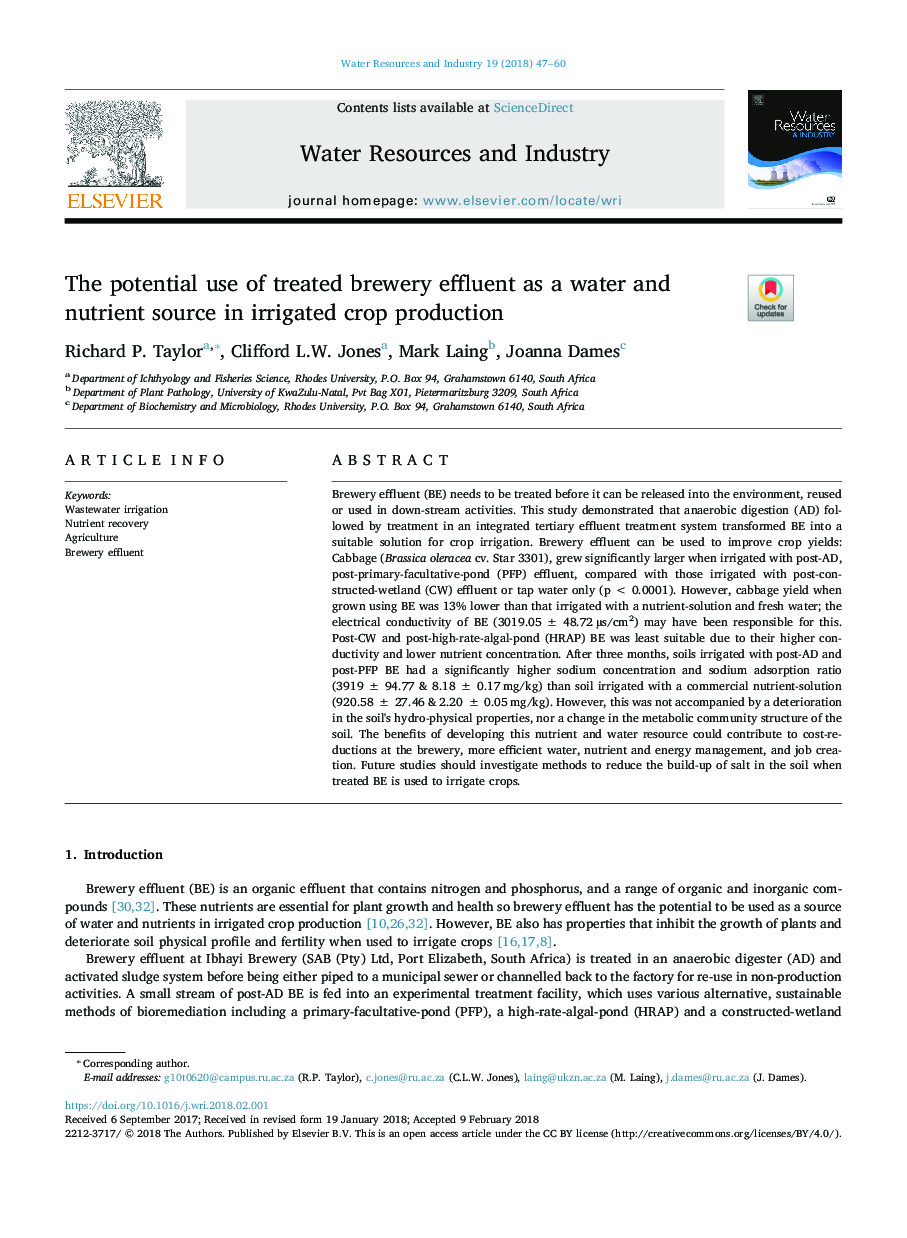| Article ID | Journal | Published Year | Pages | File Type |
|---|---|---|---|---|
| 8863008 | Water Resources and Industry | 2018 | 14 Pages |
Abstract
Brewery effluent (BE) needs to be treated before it can be released into the environment, reused or used in down-stream activities. This study demonstrated that anaerobic digestion (AD) followed by treatment in an integrated tertiary effluent treatment system transformed BE into a suitable solution for crop irrigation. Brewery effluent can be used to improve crop yields: Cabbage (Brassica oleracea cv. Star 3301), grew significantly larger when irrigated with post-AD, post-primary-facultative-pond (PFP) effluent, compared with those irrigated with post-constructed-wetland (CW) effluent or tap water only (pâ¯<â¯0.0001). However, cabbage yield when grown using BE was 13% lower than that irrigated with a nutrient-solution and fresh water; the electrical conductivity of BE (3019.05â¯Â±â¯48.72â¯Âµs/cm2) may have been responsible for this. Post-CW and post-high-rate-algal-pond (HRAP) BE was least suitable due to their higher conductivity and lower nutrient concentration. After three months, soils irrigated with post-AD and post-PFP BE had a significantly higher sodium concentration and sodium adsorption ratio (3919â¯Â±â¯94.77 & 8.18â¯Â±â¯0.17â¯mg/kg) than soil irrigated with a commercial nutrient-solution (920.58â¯Â±â¯27.46 & 2.20â¯Â±â¯0.05â¯mg/kg). However, this was not accompanied by a deterioration in the soil's hydro-physical properties, nor a change in the metabolic community structure of the soil. The benefits of developing this nutrient and water resource could contribute to cost-reductions at the brewery, more efficient water, nutrient and energy management, and job creation. Future studies should investigate methods to reduce the build-up of salt in the soil when treated BE is used to irrigate crops.
Related Topics
Life Sciences
Agricultural and Biological Sciences
Aquatic Science
Authors
Richard P. Taylor, Clifford L.W. Jones, Mark Laing, Joanna Dames,
